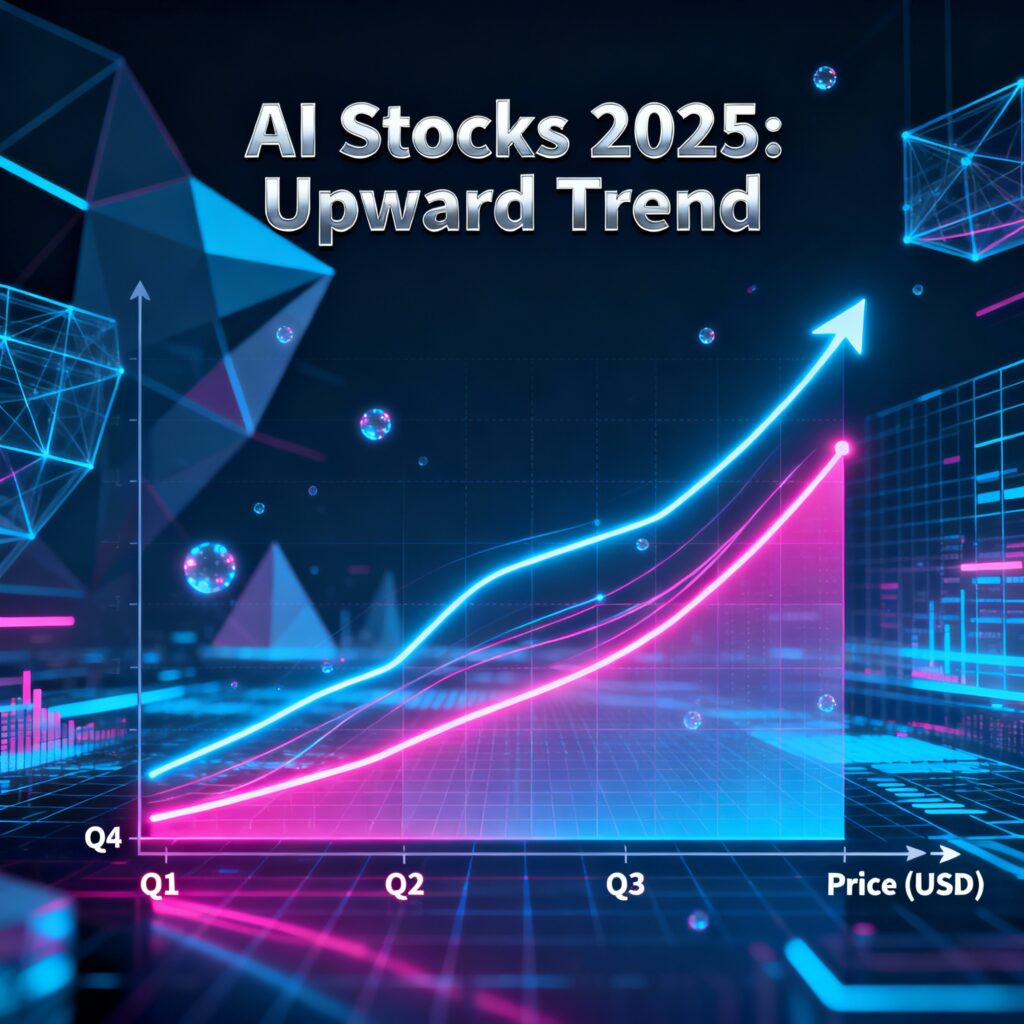AI stocks are making headlines in 2025, dominating Google Trends as investors pour capital into what many analysts call the defining technology shift of this decade. Leading the charge are powerhouse names like Nvidia, Alphabet, AMD, Meta, Palantir, ServiceNow, Micron, and Lam Research—each riding the wave of massive cloud infrastructure spending and a relentless appetite for data center expansion. This isn’t just another tech bubble; it’s a fundamental reshaping of how businesses operate, driven by the promise of productivity gains and entirely new categories of AI applications. Yet amid the euphoria, questions are emerging about valuations, circular capital flows, and whether the current boom can sustain its momentum through 2026 and beyond.
The Numbers Behind the AI Surge
The evidence is clear from market data: AI-related companies are outperforming nearly every other sector. According to Zacks Investment Research, Micron Technology has surged 58.76% over the past 12 weeks, while Lam Research is up 30.51%. Meta Platforms and ServiceNow are holding strong at forward P/E ratios of 25.06 and 52.84, respectively, with Meta projecting 19% sales growth and ServiceNow expecting nearly 20% growth. Nvidia, the poster child of the AI boom, continues hitting all-time highs as detailed by Yahoo Finance, fueled by insatiable demand for its GPUs that power everything from cloud-based AI training to cutting-edge inference applications.
Alphabet (Google) remains an undervalued AI play according to multiple analysts, with its DeepMind and Google Brain divisions positioning the tech giant to defend its search dominance against AI challengers like ChatGPT. AMD and Analog Devices round out the portfolio, serving niche but critical roles in semiconductor infrastructure. These aren’t speculative bets—they’re companies with massive earnings growth projections, proven technology, and balance sheets strong enough to weather economic turbulence.

Why the AI Boom Matters Now
The driving forces behind this AI stock surge extend far beyond mere speculation. As Fortune Magazine notes, America has essentially placed “one big bet” on AI to solve multiple economic challenges, from workforce shortages to debt concerns and productivity stagnation. The Congressional Budget Office estimates that boosting productivity growth by just 0.5 percentage points annually for 30 years could reduce publicly held debt from a projected 156% of GDP to 113% by 2055. This isn’t just about tech companies getting rich—it’s about AI becoming the cornerstone of economic resilience.
The infrastructure spending is staggering: cloud giants Amazon, Microsoft, and Google are sitting on a combined $669 billion backlog of orders, while Oracle reported remaining performance obligations worth $455 billion—up 359% year-over-year. This represents over $1 trillion in committed revenue that these companies must fulfill by building data centers, purchasing semiconductors, and deploying AI infrastructure. When you see stocks like ASML (semiconductor equipment) projecting earnings growth acceleration through 2028, it’s because these backlogs translate directly into years of guaranteed demand.
The Risks and Reality Check
Yet experienced analysts are raising important cautions. The same AI enthusiasm that’s driving massive investments could also be creating circular financial flows—tech companies buying from each other in ways that inflate revenues without generating real economic value. There’s also the question of valuations: with forward P/E ratios exceeding 50 for some AI stocks, investors are betting heavily on perfect execution and continued exponential growth.
International money managers have poured $290 billion into U.S. stocks in the second quarter alone, with foreigners now owning 30% of the American market. This concentration of global capital in AI-adjacent stocks creates both opportunity and systemic risk. If AI fails to deliver the promised productivity gains, the correction could be swift and severe.
Looking Ahead: The 2026-2028 Outlook
Projecting forward, the AI stock trajectory through 2028 appears promising but volatile. Semiconductor equipment companies like ASML are forecasting significant earnings acceleration, with some analysts predicting potential stock prices of $1,320 by 2028—a 38% increase from current levels. The fundamentals support this optimism: Advanced Micro Devices CEO Lisa Su expects AI accelerator chip sales to grow at 60% annually through 2028, reaching $500 billion in annual revenue.
However, investors should prepare for increased volatility as the market matures. The current concentration of global investment in AI stocks creates both amplified upside potential and heightened downside risk. Smart money will likely rotate between different AI subsectors as infrastructure needs evolve from basic chip manufacturing to specialized applications and software solutions.
For investors, the key is selective positioning rather than blanket AI exposure. Companies with sustainable competitive advantages, strong balance sheets, and diversified revenue streams within the AI ecosystem are most likely to weather the inevitable market corrections while participating in the long-term growth story. The AI revolution is real, but like all transformative technologies, the path forward won’t be linear.
